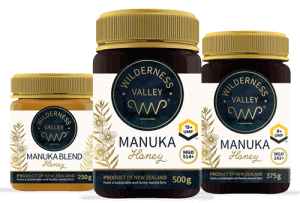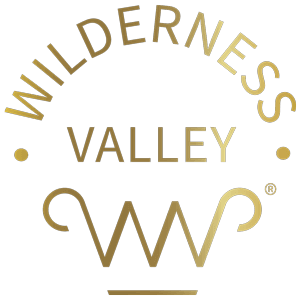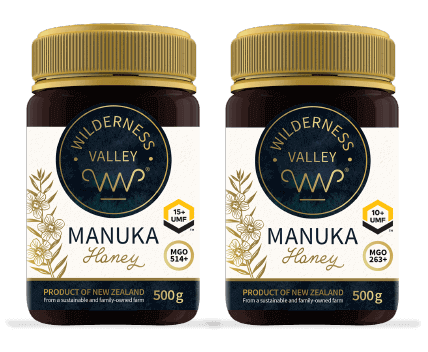Real Manuka Honey Online NZ
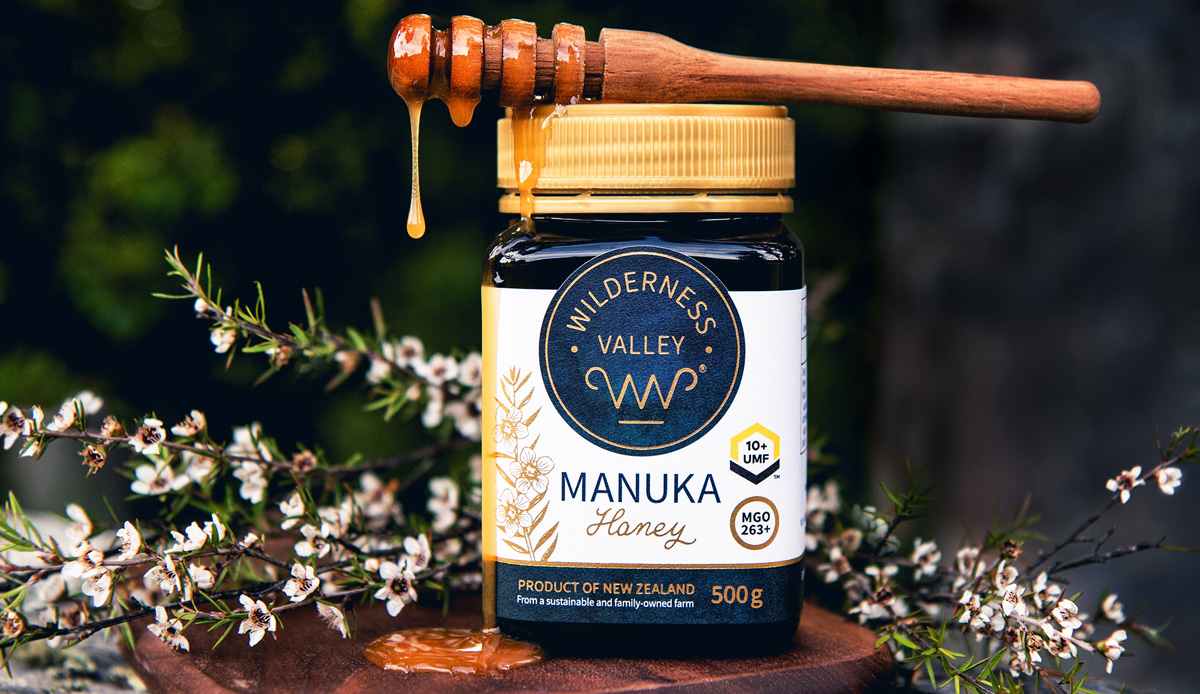
Manuka [ mā·nu·ka ] honey is a tasty, natural powerhouse of a food.
It comes from the nectar of Manuka bush, Leptospermum Scoparium, which is native to New Zealand. It is the Manuka nectar and the bee that give this honey its unique properties.
For thousands of years, honey has been prized for its unique healing properties. More recently, scientists discovered that particular plants give honey more qualities, like the honey from New Zealand Manuka trees.
With its unique properties, so good for human wellbeing, Manuka honey has become one of the most researched and sought-after varieties of honey in the world. The non-peroxide activity, as Dr Peter Molan of New Zealand’s Waikato University named it, is 100 times more stable and potent than any other honey.
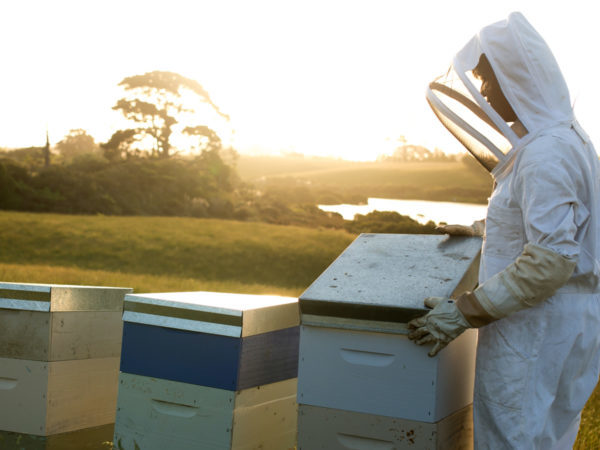
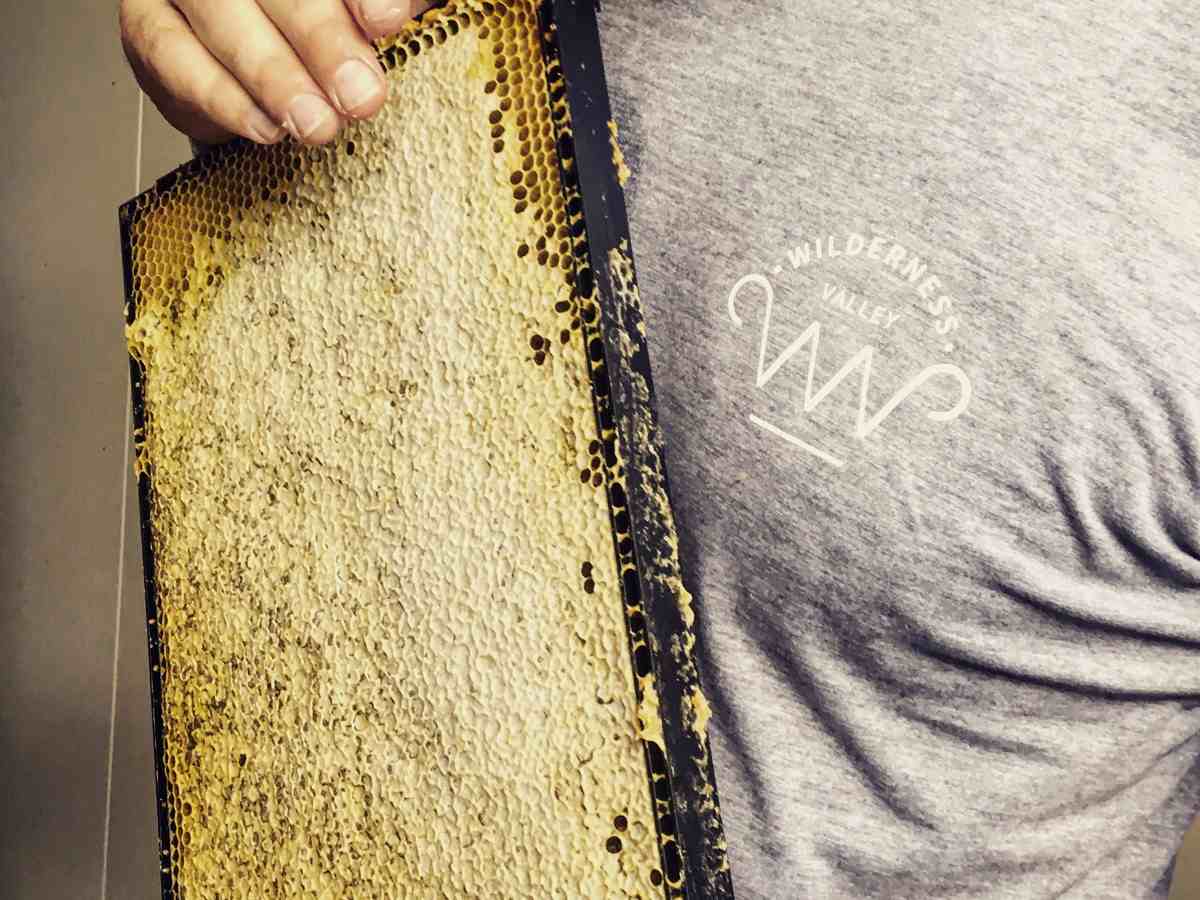
100% Pure
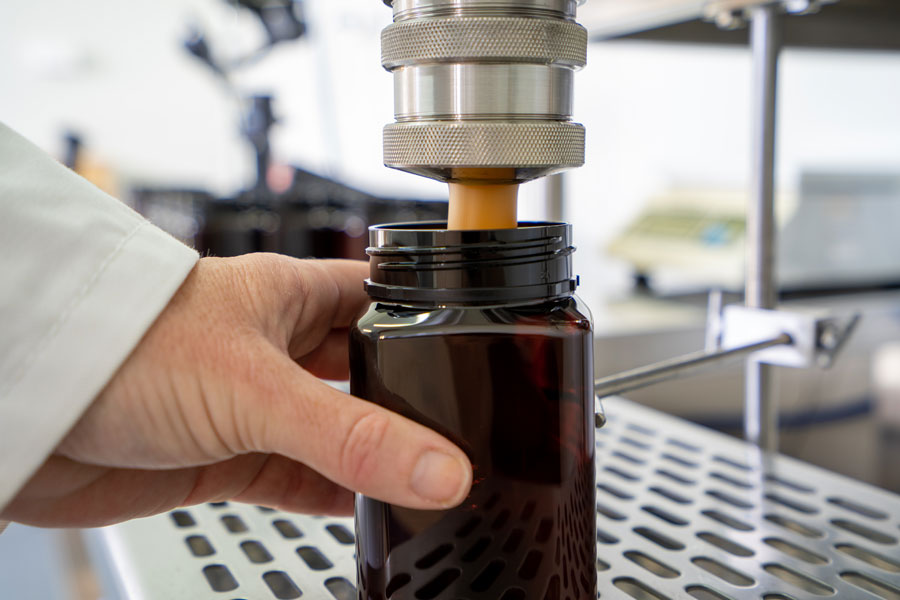
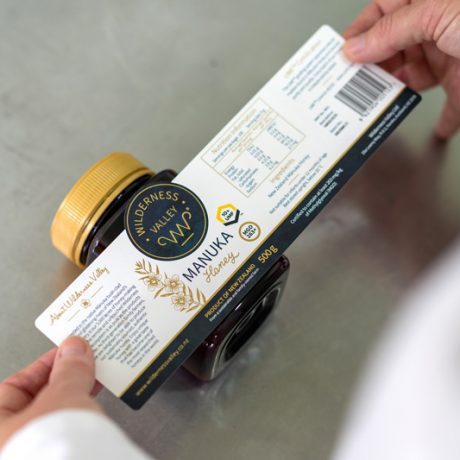
We forego conventional farming techniques favouring sustainable practices that preserve and enhance the environment. Native Manuka trees on our farm produce an abundance of nectar, while our beekeepers take care of hundreds of hives with bees spread around 2000 hectares of our farm.
The extraction, bottling and hand-packing take place in our production facility near Auckland.
Manuka is thick honey, so we use a machine called a ‘pricker’ to prick into each cell of a honey frame to extract the honey. Then, to retain the natural qualities of Manuka honey, we load honeycombs into a centrifuge machine that spins the contents causing the honey to separate from the wax comb.
Next, we hand-pack and prepare each jar of the gold liquid for delivery, ensuring that the Manuka honey you receive is genuine and of the best quality.

We are part of the Unique Manuka Factor Honey Association, a New Zealand Government approved independent organisation that certifies only the best quality Manuka honey with their UMF grading system.
This system is the most comprehensive, trusted, and widely used Manuka honey grading in the world. It is used by more than 80% of the New Zealand honey industry.
We offer our Wilderness Valley Manuka honey in three UMF certified grades, including 5+, 10+ and 15+ in 250 and 500-gram jars.
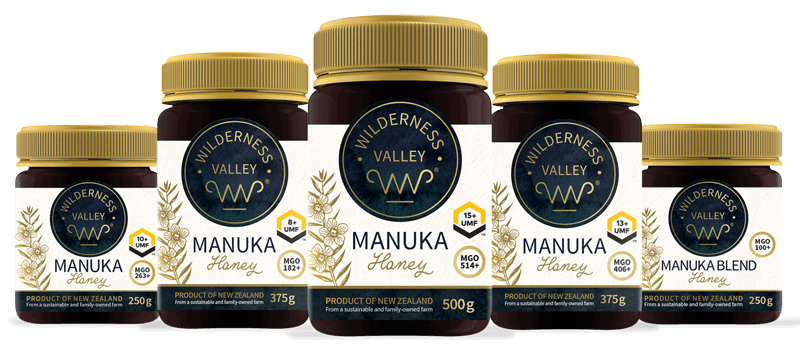
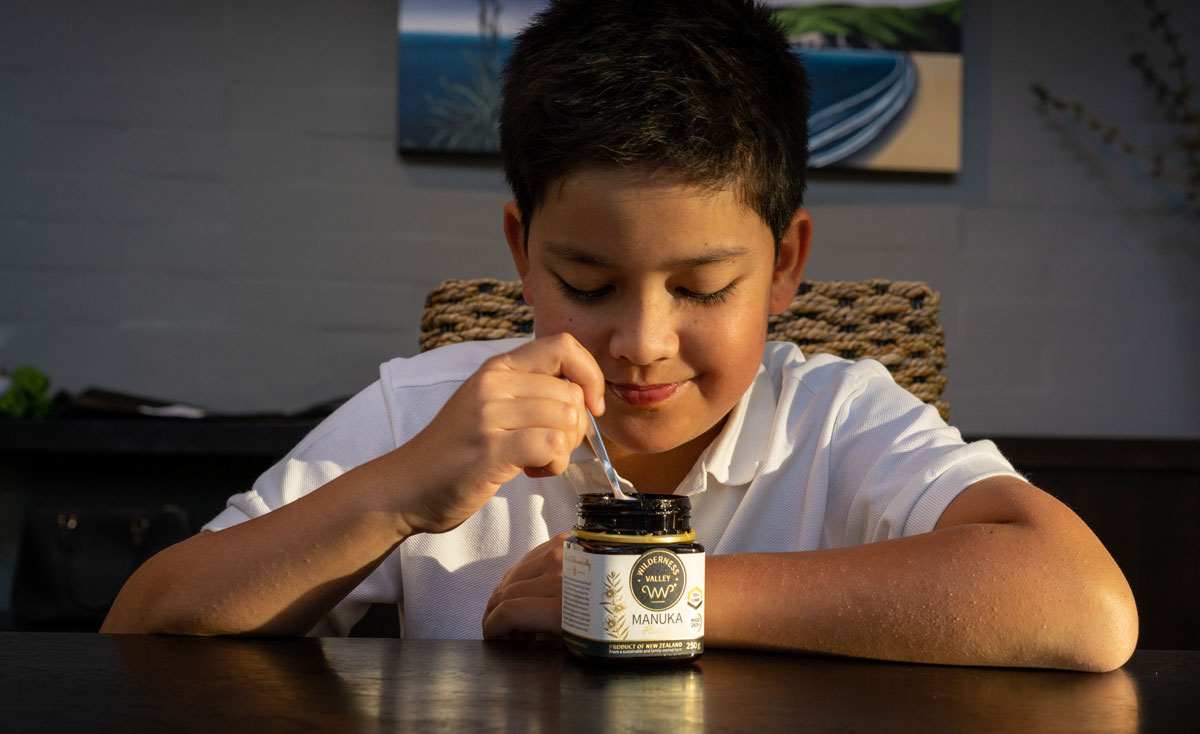
If you are looking for real Manuka honey online, you’ve come to the right place. At Wilderness Valley, we are passionate about producing the best quality Manuka honey available, all independently tested and graded for purity and authenticity. The products in our range all come with an official Manuka honey UMF™ grading, and all aspects of honey production happen right here on our farm in a remote and beautiful location in the King Country in the North Island in New Zealand.
The Manuka honey that we produce is available for delivery in Auckland and anywhere else in the country. When you buy from us, you will be buying from a family-owned and operated honey producer who is passionate about bees, honey, the Manuka trees that are central to the production of our honey, and the land we are responsible for.
Manuka Honey UMF™
 UMF is an official grading system for pure, authentic honey. Honey products with the UMF logo must first meet the government standard for Manuka honey as defined by the New Zealand Ministry for Primary Industry. Manuka honey carrying the UMF logo must also meet strict requirements for quality and purity, and the honey is graded with a Manuka honey UMF rating.
How does the whole process work? At Wilderness Valley, we are proud members of the Unique Manuka Factor Honey Association. As members of the organisation, when our batches of Manuka honey are independently tested and meet the required levels of natural chemical markers, they can then be certified to carry the UMF™ rating on our label.
UMF is an official grading system for pure, authentic honey. Honey products with the UMF logo must first meet the government standard for Manuka honey as defined by the New Zealand Ministry for Primary Industry. Manuka honey carrying the UMF logo must also meet strict requirements for quality and purity, and the honey is graded with a Manuka honey UMF rating.
How does the whole process work? At Wilderness Valley, we are proud members of the Unique Manuka Factor Honey Association. As members of the organisation, when our batches of Manuka honey are independently tested and meet the required levels of natural chemical markers, they can then be certified to carry the UMF™ rating on our label.
Real Manuka Honey and UMF™ Ratings – What You Need to Know
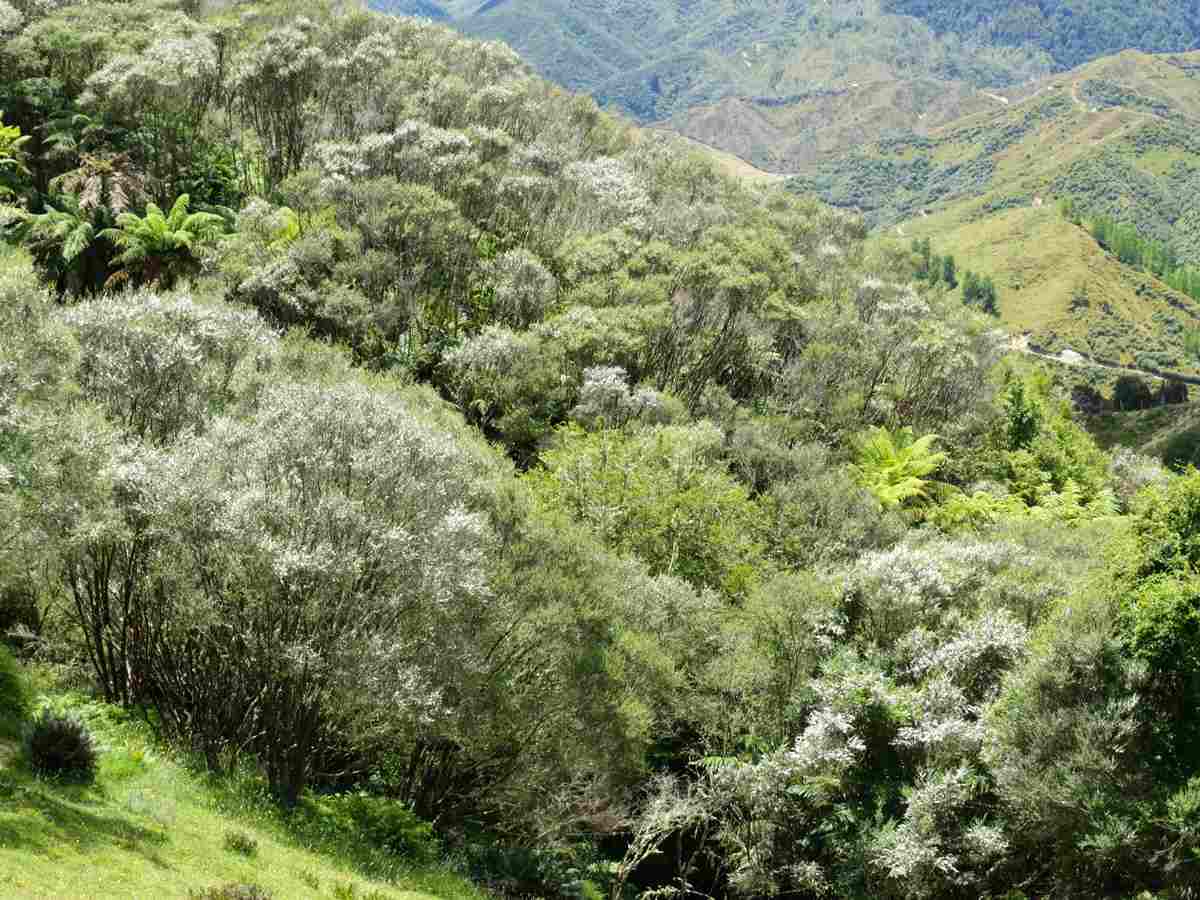 If you search for real Manuka honey online, you will find a wide range of different options. However, real Manuka honey is a very specific product. As a starting point, it needs to be honey made by bees who get their nectar from Manuka trees in New Zealand.
To be sure you are getting real Manuka honey, the best advice is to look out for the honey's UMF™ grade and logo. Real Manuka honey produced here in New Zealand will proudly display a UMF™ rating as it proves the honey has been tested as true, unadulterated, 100 percent pure Manuka honey.
Even when you get pure Manuka honey, there are different types – different grades. These grades are based on the concentration of natural chemical markers present in the honey. When Manuka honey is tested for its UMF™ grade, the independent laboratory test for three specific chemical markers that attest to the purity and quality of the honey. Those chemical markers are:
If you search for real Manuka honey online, you will find a wide range of different options. However, real Manuka honey is a very specific product. As a starting point, it needs to be honey made by bees who get their nectar from Manuka trees in New Zealand.
To be sure you are getting real Manuka honey, the best advice is to look out for the honey's UMF™ grade and logo. Real Manuka honey produced here in New Zealand will proudly display a UMF™ rating as it proves the honey has been tested as true, unadulterated, 100 percent pure Manuka honey.
Even when you get pure Manuka honey, there are different types – different grades. These grades are based on the concentration of natural chemical markers present in the honey. When Manuka honey is tested for its UMF™ grade, the independent laboratory test for three specific chemical markers that attest to the purity and quality of the honey. Those chemical markers are:
- Leptosperin – a chemical that naturally occurs and is only found in nectar from Manuka trees.
- Methylglyoxal – an antibacterial component found in a variety of honey types, although in most types of honey, it only exists in small quantities. It comes from the conversion of dihydroxyacetone (see below). Manuka honey is believed to have an antibacterial effect, but only when the concentration of methylglyoxal in the honey is high.
- Dihydroxyacetone – a chemical compound found in the nectar of Manuka flowers. The amount of dihydroxyacetone varies from tree to tree. Higher levels of dihydroxyacetone, or DHA, produce higher concentrations of Methylglyoxal in the honey.
